I’ve often wondered why lettuce and spinach aren’t summer crops. Whose idea was it to give us all those sweet, juicy tomatoes and fresh, crisp cucumbers in the summer, but no lettuce or spinach to go with them?
Sure, there are ways to extend the life of your spring greens by giving them more shade or less sun. But… come summer, they’re well on their way to bolting.
For those of us longing for leafy greens even when it registers 90°F outside, all is not lost. You can still grow a summer salad bed without any tricks!
Disclosure: If you shop from my article or make a purchase through one of my links, I may receive commissions on some of the products I recommend.
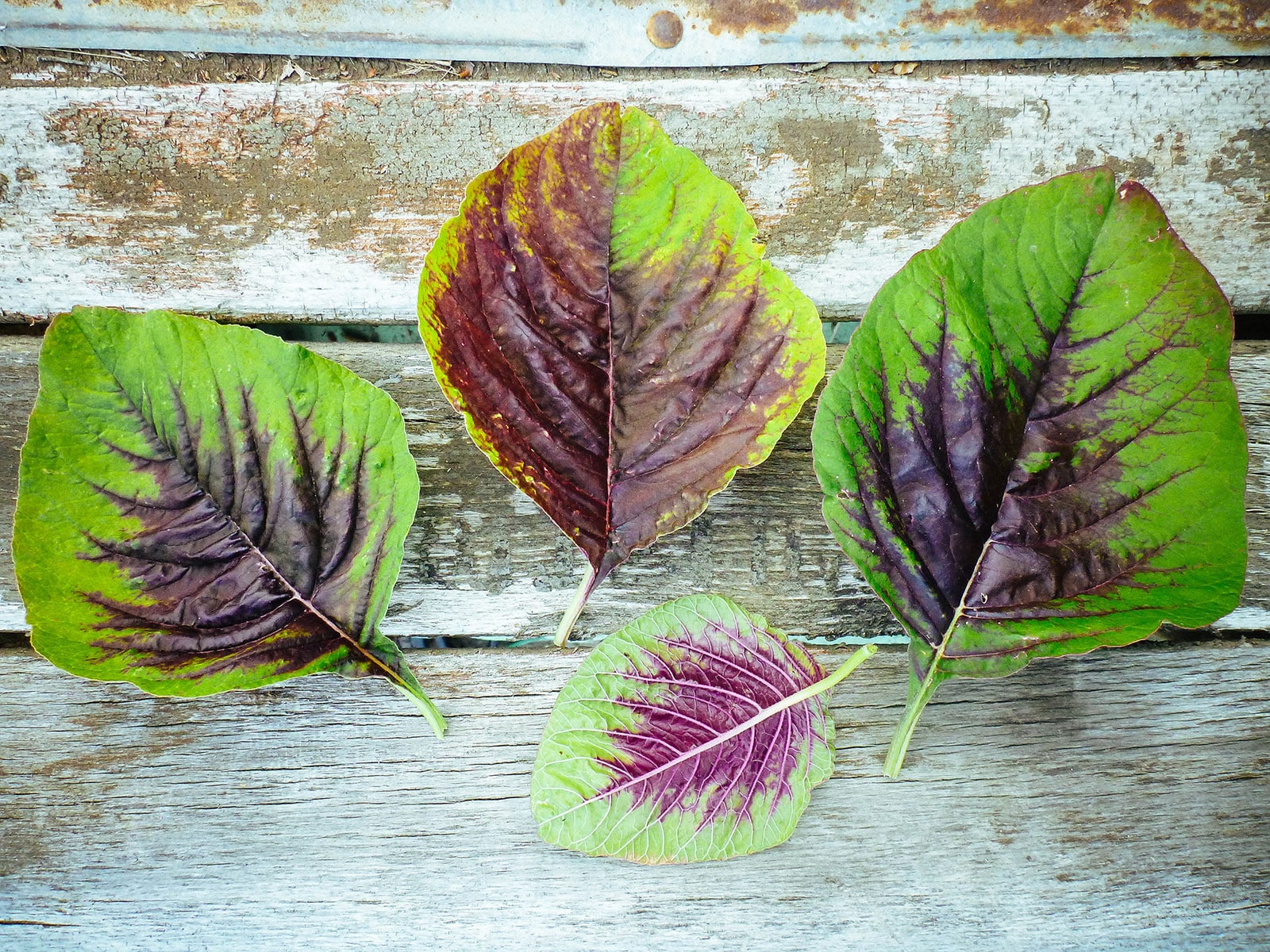
Edible red leaf amaranth
Also known as Chinese spinach, edible red leaf amaranth (Amaranthus tricolor) grows quickly—especially in hot, hot weather—and can be harvested just a month after sowing.
It’s a cut-and-come-again crop that can grow over 6 feet tall and produces all season long for me. It also packs a nutritional punch, beating out beet greens, spinach, and chard in calcium, niacin, and iron content.
As my favorite summer salad green, edible red leaf amaranth tastes like a very mild kale. The deep red color is also beautiful against all the other greens in a salad bowl.
Buy edible red leaf amaranth seeds at Botanical Interests

Perpetual spinach
The name alone gives a good clue that this vigorous leaf is long-lasting. But the name is also misleading, as perpetual spinach (Beta vulgaris var. cicla) is not a spinach at all—it’s actually a member of the beetroot family known as chard. (Chard produces the same leafy tops as beets, but does not form a swollen root.)
However, it tastes more like spinach than it does chard and even looks like spinach with its flatter, more pointed leaves and narrower stems.
In mild climates, perpetual spinach grows all summer long, over fall and winter, and even through the following spring. It’s a versatile green that should be a staple in everybody’s garden!
Buy perpetual spinach seeds at True Leaf Market
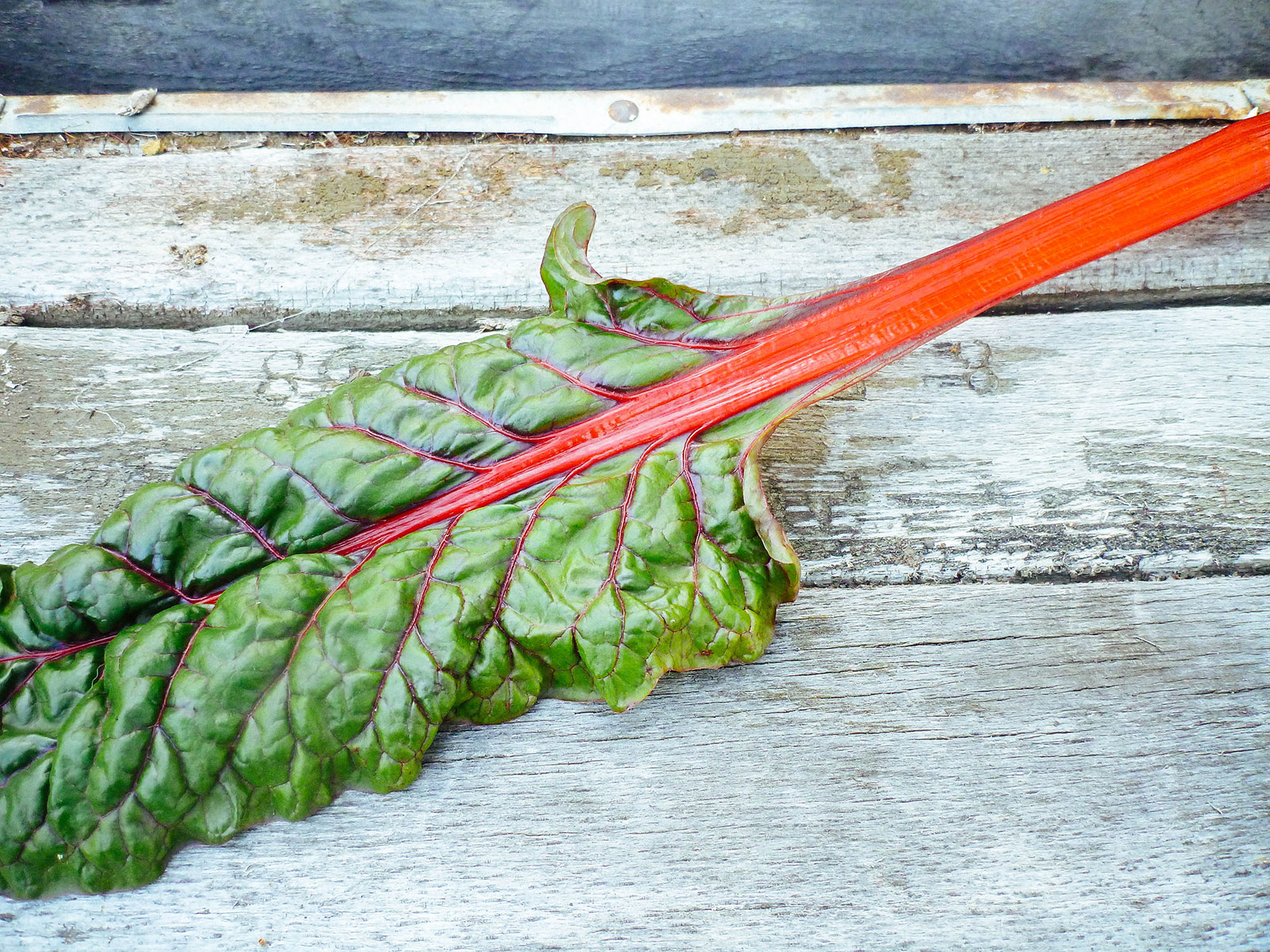
‘Vulcan’ chard
This type of chard (an improved variety from Switzerland) is also called rhubarb chard because of its red ribs and stems.
While not as long-lasting as perpetual spinach, ‘Vulcan’ chard (Beta vulgaris subsp. vulgaris) can tolerate summer temperatures up to 85°F (even higher with afternoon shade or shade cloth) and keeps going until the first frost.
It’s a highly prolific vegetable and I can never seem to keep up with the amount of leaves my plants put out every week! Even when the leaves are fully mature, they’re still tender and delicately crisp.
Buy ‘Vulcan’ chard seeds at Baker Creek Heirloom Seeds
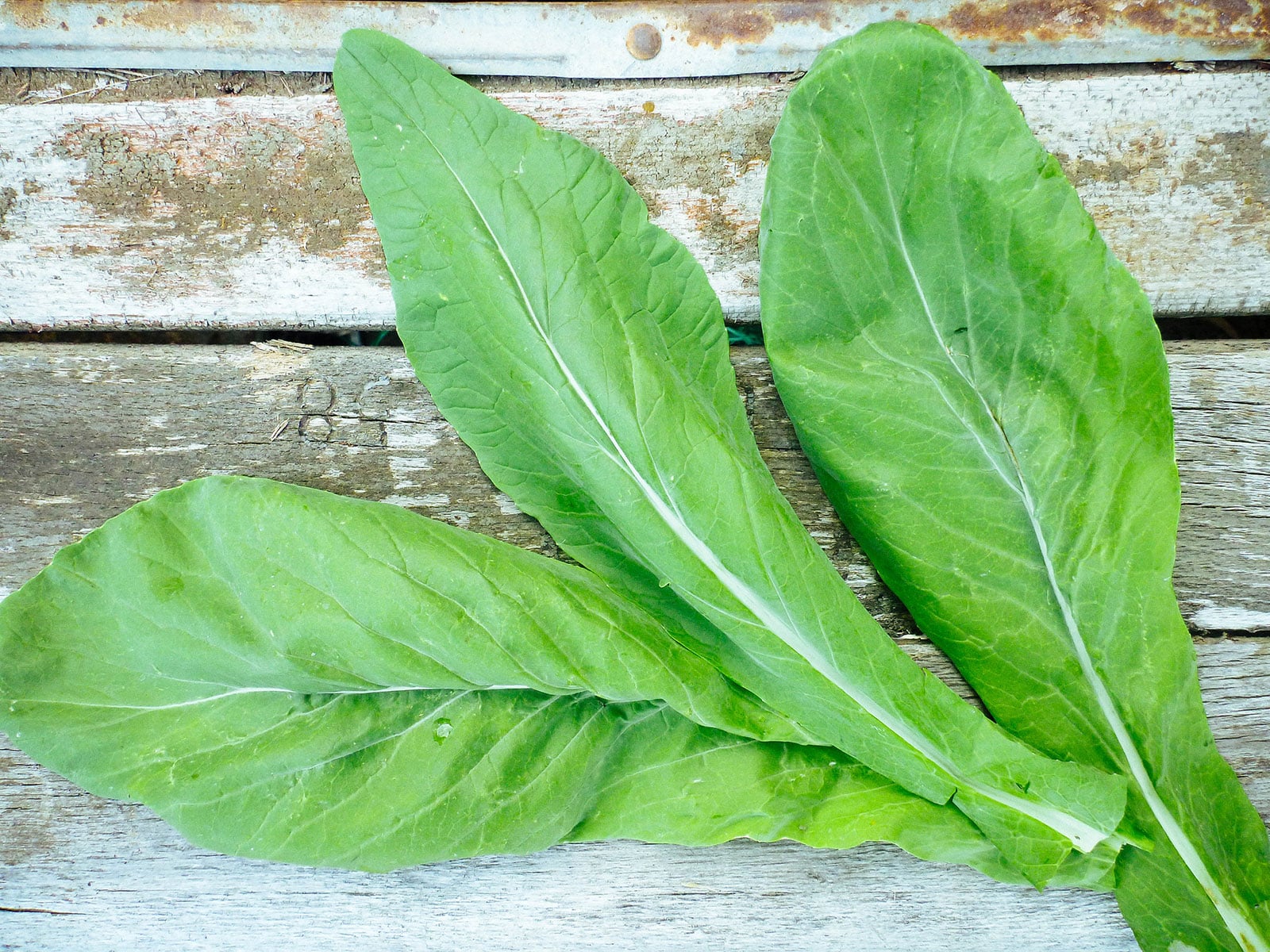
Komatsuna
This Japanese leaf vegetable is related to the common turnip. Komatsuna (Brassica rapa subsp. nipposinica) is sometimes called tendergreen mustard, spinach mustard, or mustard spinach (again, not a spinach… who comes up with these names?).
I actually grow komatsuna year-round because it does equally well in the warmer days of summer as it does the cooler nights of winter. It’s one of the fastest growing greens in my garden, reaching maturity in just 40 days and producing for several months.
The leaves have a mild flavor when young and become a bit more bitter as they grow larger. Komatsuna is also great for making pickled mustard greens.
Buy komatsuna seeds at Botanical Interests
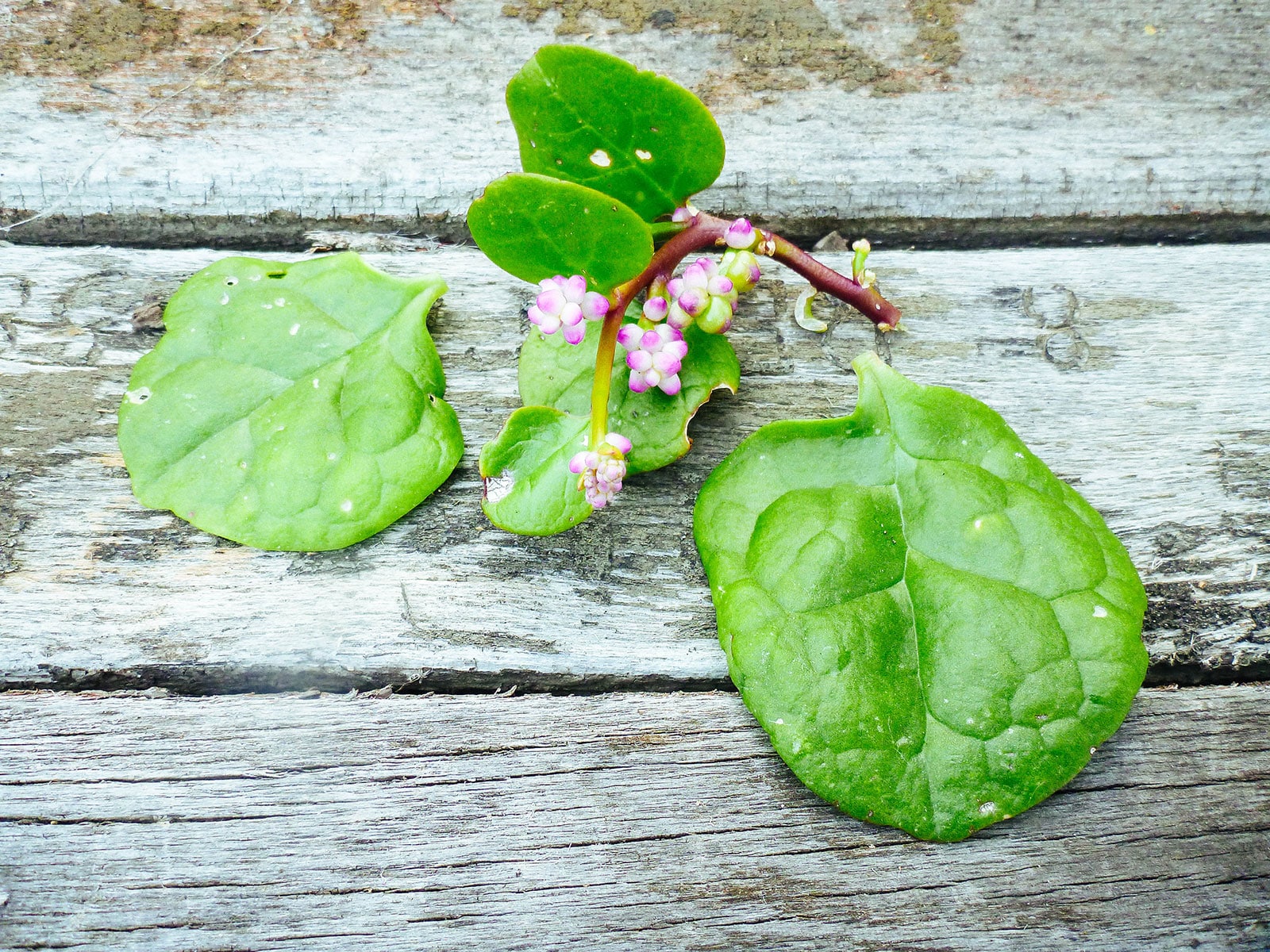
Malabar spinach
You’ve probably guessed by now that malabar spinach is, of course, not a spinach, though the leaves look so similar that the plant is sometimes called climbing spinach, vine spinach, Vietnamese spinach, Indian spinach, or Ceylon spinach.
Malabar spinach (Basella alba) is a tropical perennial vine with bold red stems that loves to climb… and climb… and climb… capable of reaching 10 feet long but generally staying smaller in home gardens. My malabar spinach actually doesn’t seem to take off until it’s hot and sunny—long after my real spinach is wilting in the garden!
The glossy, semi-succulent leaves are slightly rubbery to the touch and impart a somewhat slimy texture when cooked. While this can be a turn-off for some people, others take advantage of its mucilaginous nature (reminiscent of cooked okra) to help thicken soups and stews.
When used raw (and before the plant starts flowering), malabar spinach adds a nice bite to a salad and tastes somewhat like mild beet greens.
Buy malabar spinach seeds at True Leaf Market
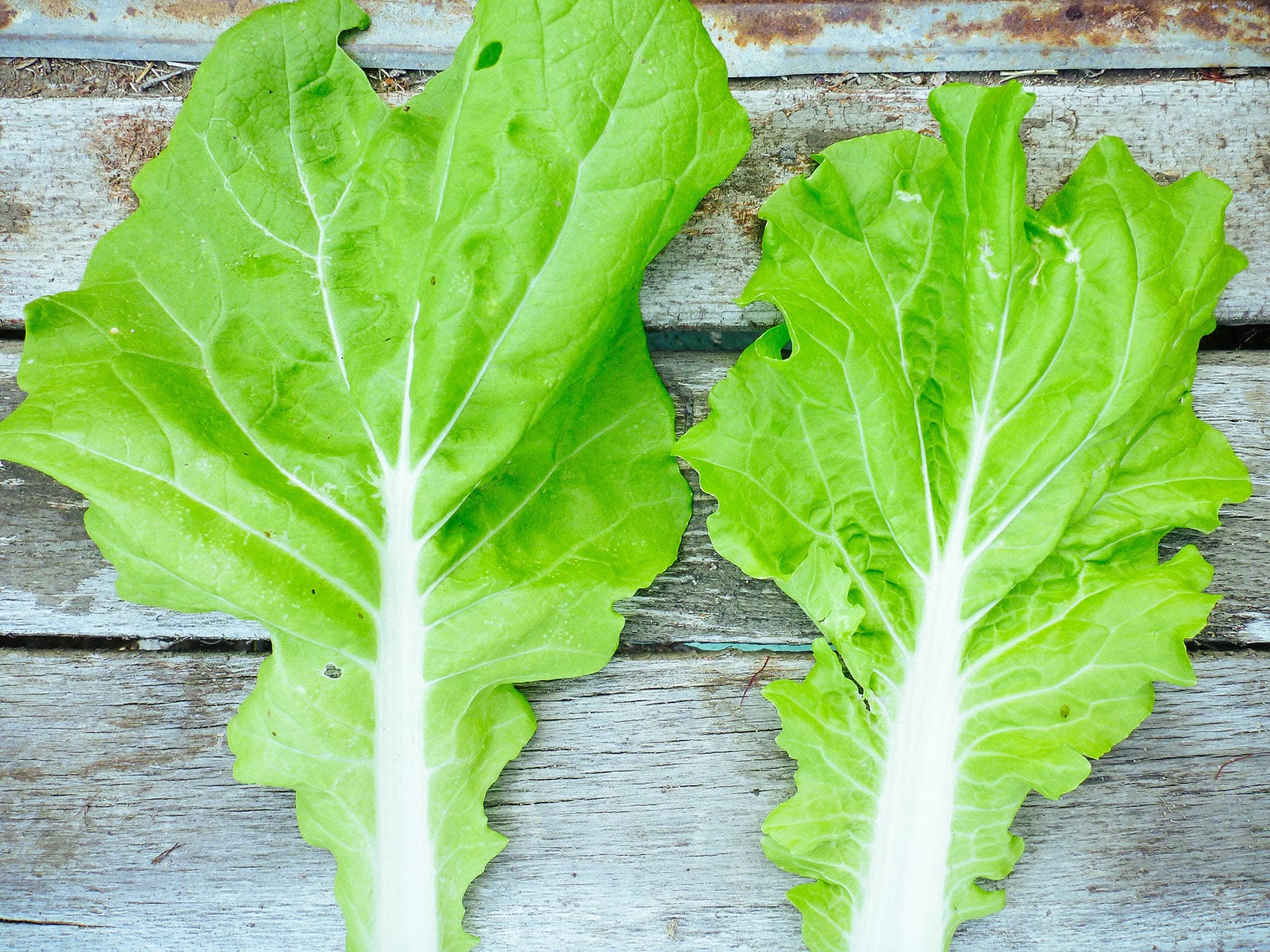
Tokyo bekana
As a Japanese version of Chinese cabbage, Tokyo bekana (Brassica juncea) is a type of mustard that looks like lettuce. Confused yet?
It’s a cut-and-come-again crop that grows quickly and can be harvested in the baby leaf stage, or left to grow into large, frilly leaves.
The flavor becomes more brassica-like as the leaves mature, so if you prefer a milder mustard taste, use them as baby greens. Tokyo bekana grows best in mild summer climates and will last longer with some afternoon shade (or under shade cloth during the hottest part of the year).
Buy Tokyo bekana seeds at True Leaf Market
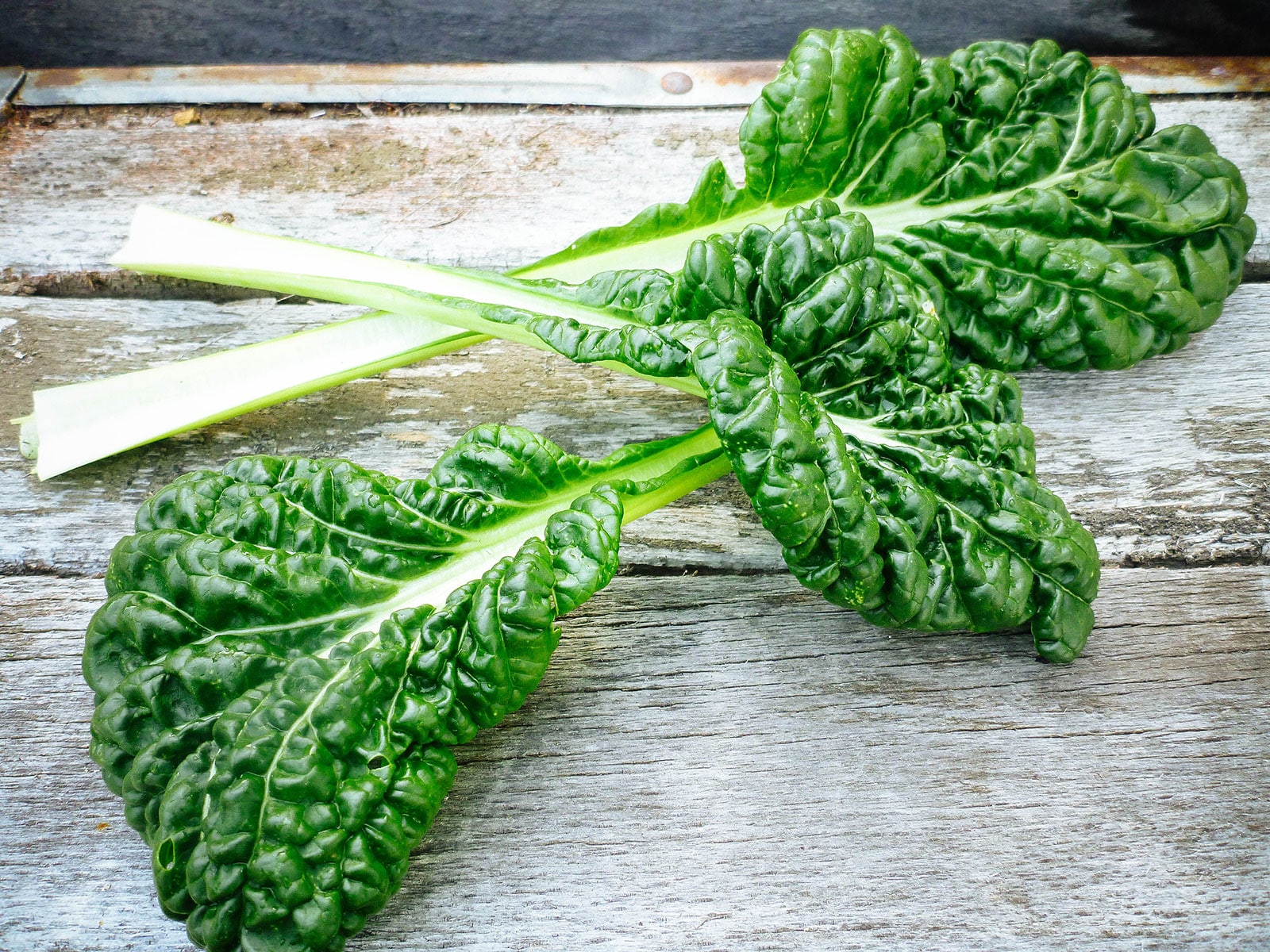
Yukina savoy
This mustard green, part of the Chinese cabbage family, looks a lot like tatsoi but with cupped and heavily savoyed (garden speak for crinkled) leaves.
Yukina savoy (Brassica rapa Pekinensis Group) is not the type of green you would think to put in a salad, but the young leaves (stems and all) are delicious raw. Because of the cucumber-like and mild mustard flavor, yukina savoy pairs well with citrus.
It seems to favor any type of growing condition from warm to cool, and is slow to bolt once summer peaks. (But once it does bolt? The flowers are 100 percent edible, just like kale buds.)
Buy Yukina savoy seeds at True Leaf Market
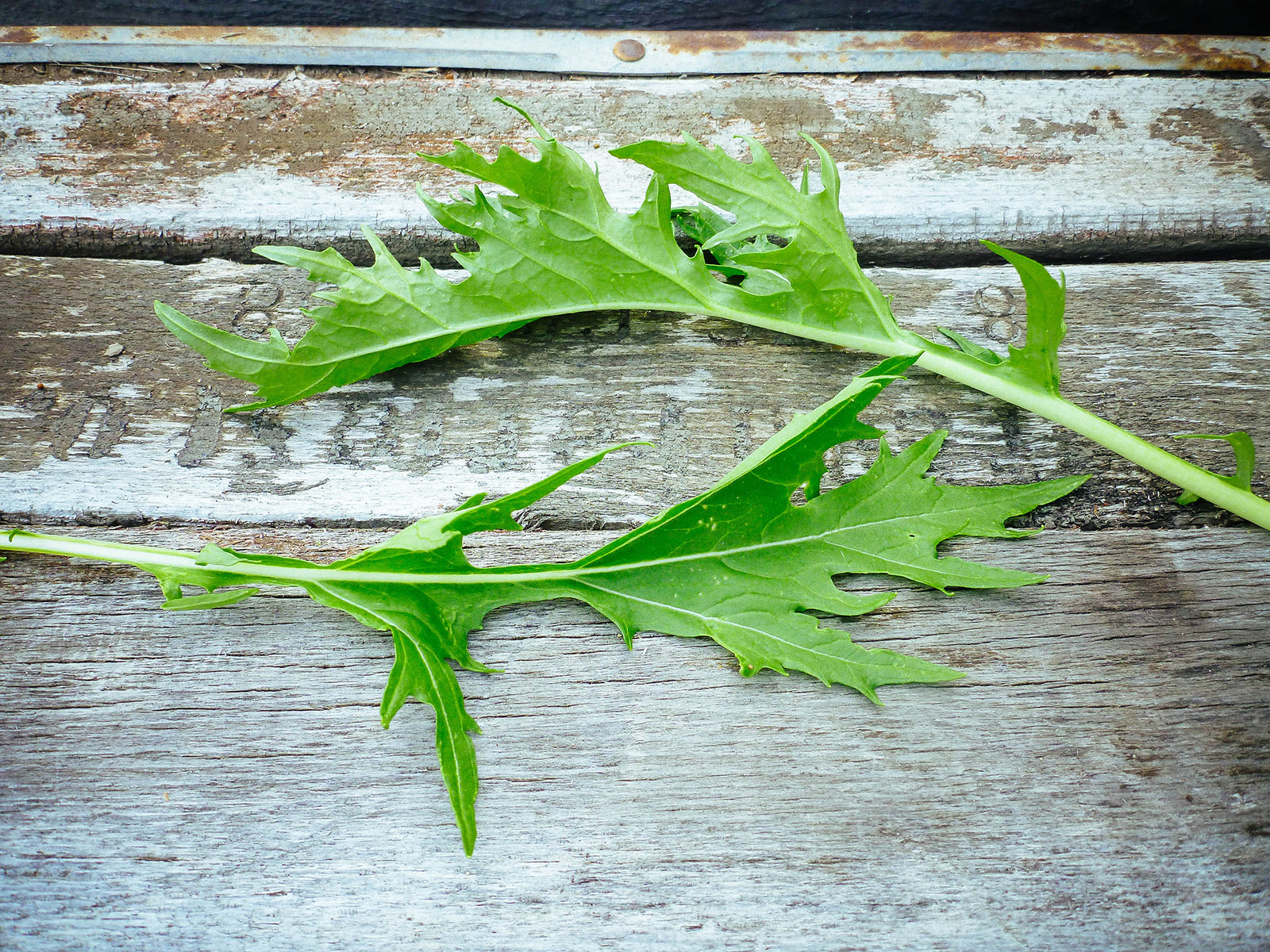
Mizuna
Despite being a Japanese mustard, mizuna (Brassica rapa subsp. nipposinica) is neither hot nor bitter. The saw-toothed leaves and tender stems have a slightly tangy flavor when young, and a mildly peppery flavor when mature.
You can harvest baby mizuna (about 20 days after sowing) with other young salad greens on this list to make your own mesclun!
Mizuna is technically a cool-season vegetable, though it grows steadily year-round for me from 90°F summer afternoons to 40°F winter evenings.
I like to grow mizuna between taller summer plants (such as edible red leaf amaranth or komatsuna) to give it a little shade and help extend its season.
Buy mizuna seeds at Botanical Interests
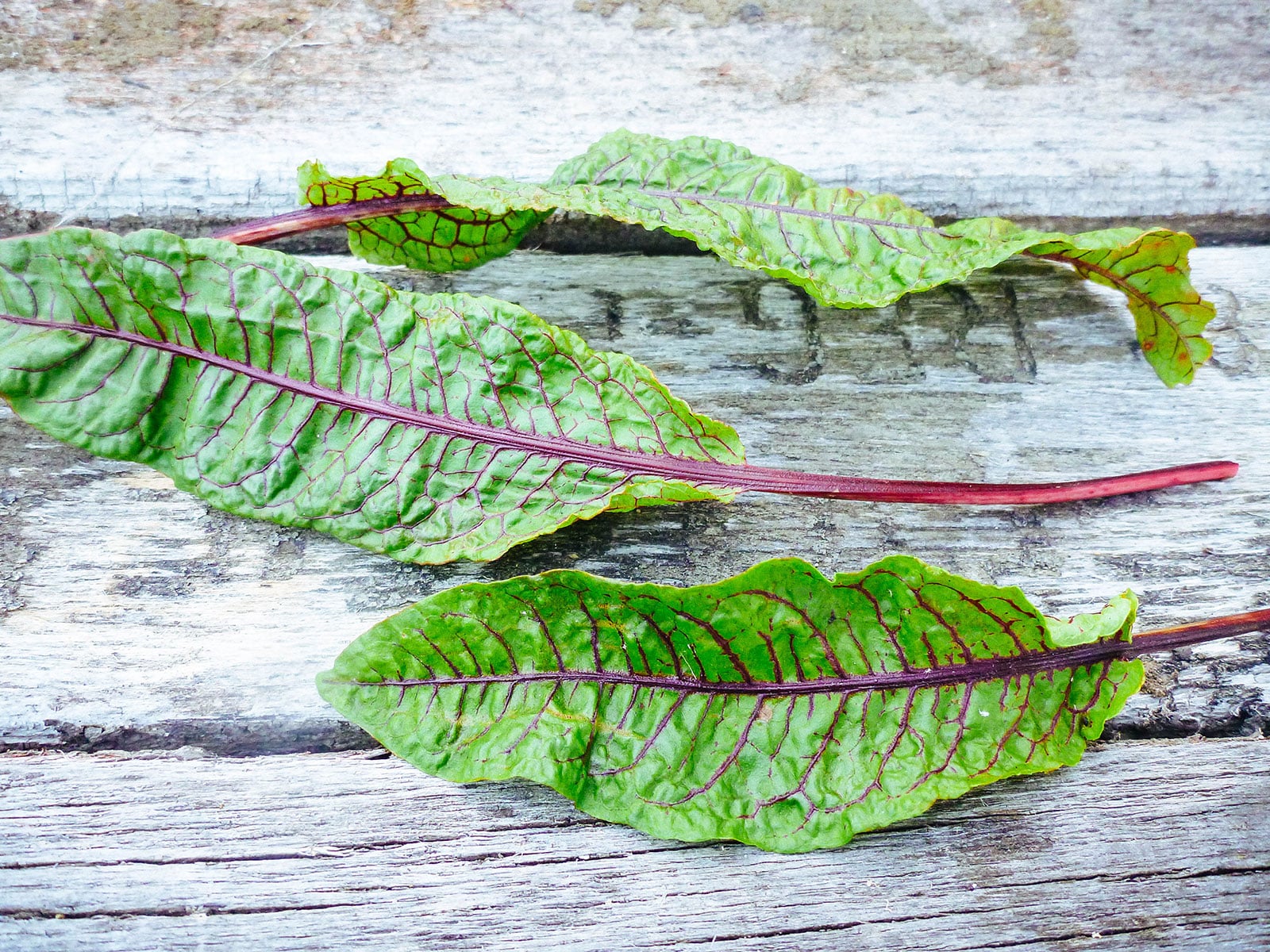
Red-veined sorrel
As a member of the sorrel family, red-veined sorrel (Rumex sanguineus) is also called bloody sorrel, bloody dock, bloody wood dock, bloodwort, or if you prefer a less macabre reference, red-veined dock.
Red-veined sorrel is actually a perennial herb that tastes like a tangy spinach. It produces a rosette of green leaves that look like they have little blood vessels running through them. Since the red stems do bleed a bit of color, I use the individual leaves more as an accent in my salads.
For being a warm-region plant (hardy from zones 5 and up), bloody dock prefers rather damp conditions, so it’s well suited for areas prone to summer storms.
Buy red-veined sorrel seeds at True Leaf Market
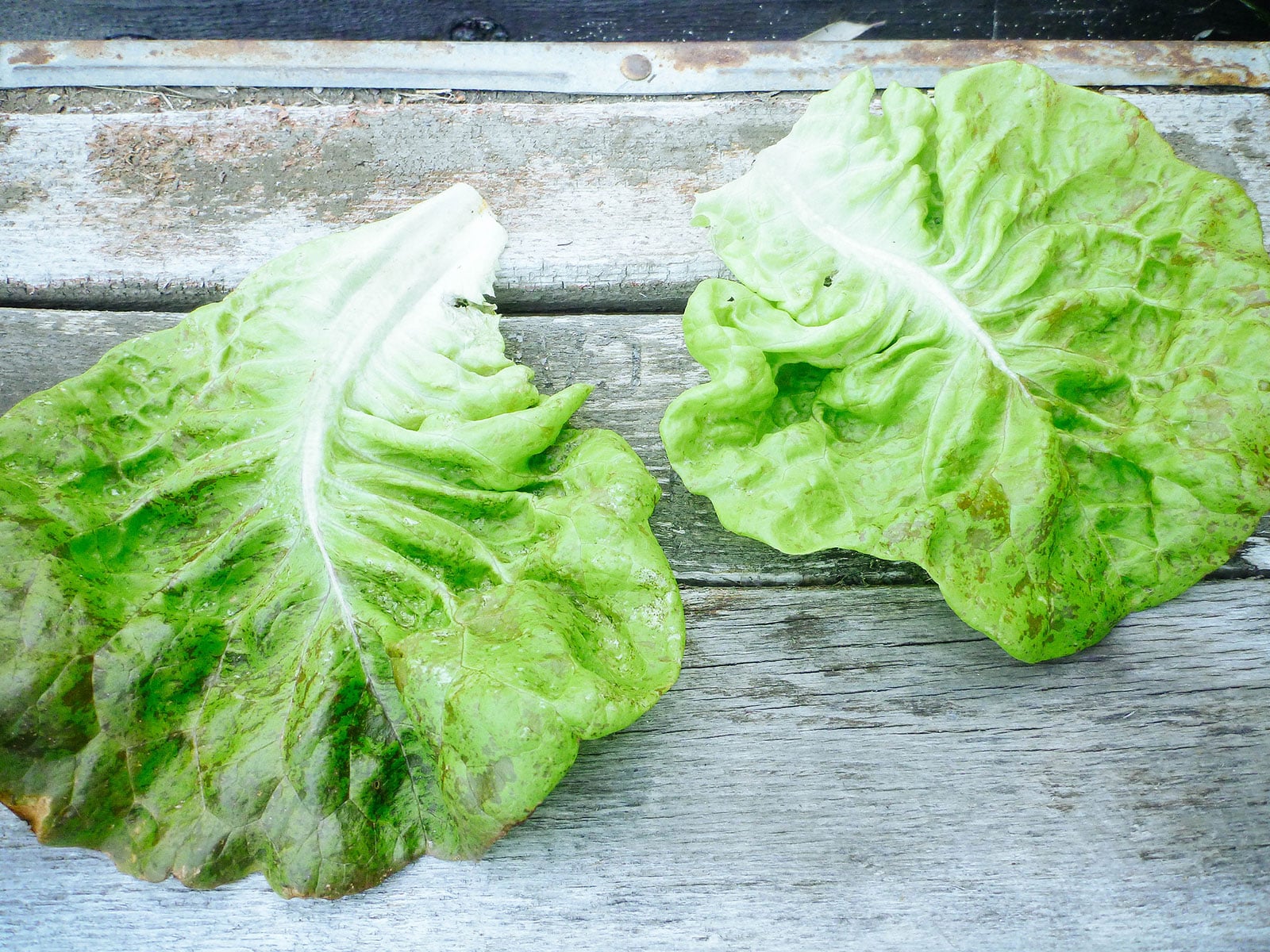
Butterhead lettuce
And if you don’t believe a salad is a salad without your beloved lettuce, you can try any number of heat-tolerant lettuces from my list, such as butterhead types (Lactuca sativa).
I’ve had success growing a few different heat-tolerant lettuces in summer by starting them in late spring (before the weather turns too hot), and keeping them mulched and moist through most of summer. They fare better with afternoon shade (or grown between taller plants) to help them last all season.
Buy butterhead lettuce seeds at Botanical Interests
Do you grow another summer-lovin’ salad green in your garden? Please share!
View the Web Story on heat-tolerant salad greens.


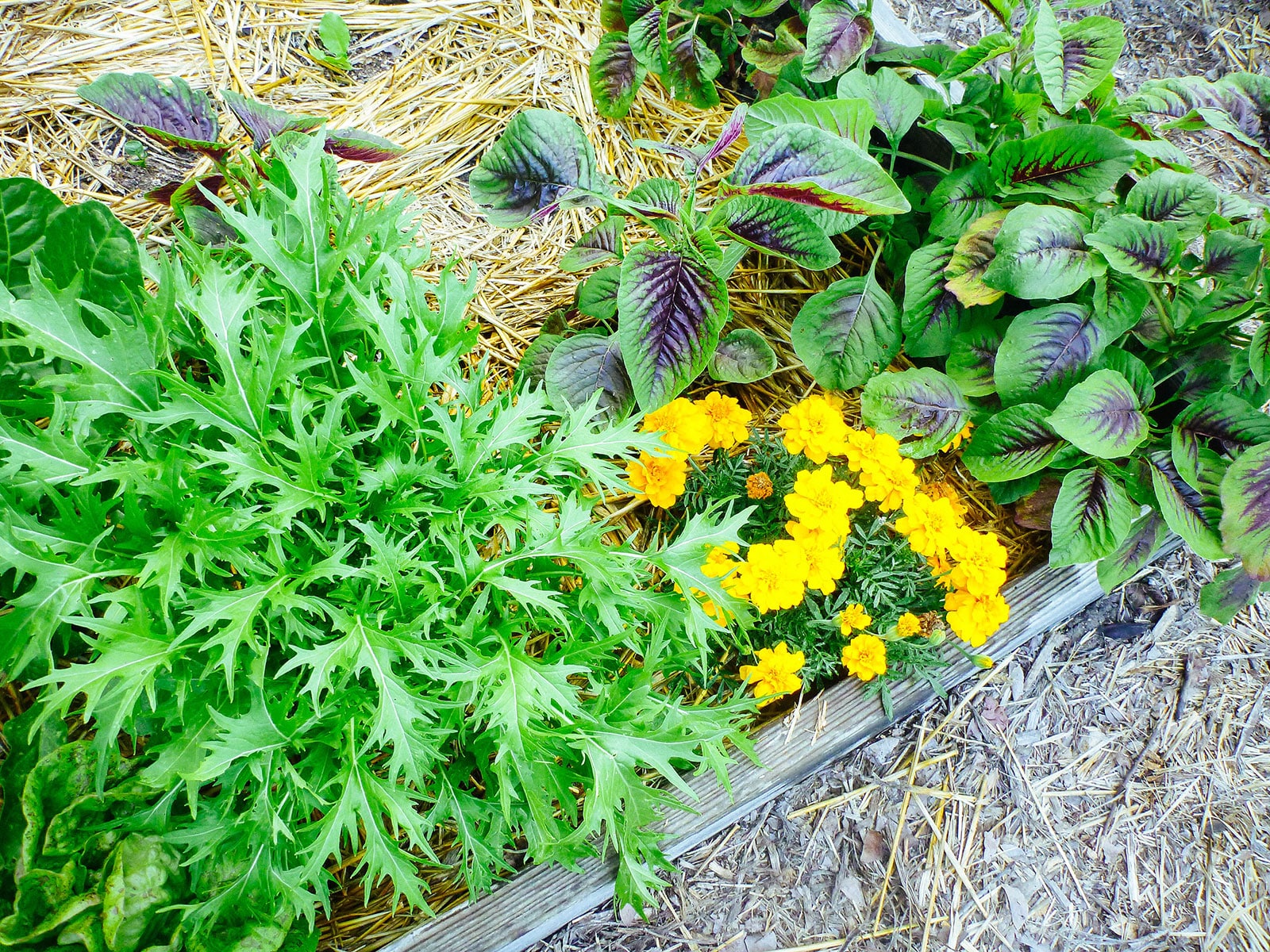













Great list. Will try here in Belize.
WING beans a must for Belize.
How big of pot do you think I would need for the amaranth? I wanted to try to grow it in a pot. Thank you so much loved this article!
This is so great! Thank you! I love greens, all greens! I like trying different types and rotating regularly to keep from getting too bored and overloaded from any one thing. I’m in NorCal, Sierra Foothills. I get hot Summers and frost in Winters but no snow.
Where do you buy your seeds?
Most of my seeds come from http://www.rareseeds.com and I’ve used them since the very beginnings of my garden. You can take a tour of their farm here: http://gardenbetty.com/2016/01/a-tour-of-baker-creek-heirloom-seed-company/
Linda,
I love your blogs. Do you think it’s okay to buy seeds now and start planting? I’m a complete newbie to gardening. And I have a little balcony. I’d like to plant the yukina savoy and the perpetual spinach.
Hi, we gardeners in California are lucky to live in a year-round growing climate! So yes, you can buy seeds now and start planting. Yukina savoy and perpetual spinach can be started in fall and grown through winter and spring. Just make sure they receive enough sunlight on your balcony (at least 6 hours a day for best results).
I was looking for a list like this! thank you
You’re welcome. Enjoy!
I enjoyed growing Amaranth last summer, but I couldn’t deal with the taste. Ended up not eating it and removing it from my garden.
My favorite summer plant is Kang Kong (Ipomoea aquatica). It is easy to start from seed or you can root cuttings (roots show in 2-3 days) from the supermarket. It’s super delicious in a stir fry or soup. I live in Asia so just about every supermarket has it. As for the US not sure…
I’m not sure if I’ve seen kang kong in an Asian market here, unless it goes by another name. As for the amaranth, the young tender leaves are not as bitter as the mature leaves, but I love them both the same (depending on how I eat or cook them).
Kang Kong, aka:
Ong Choy
Asian water spinach
Ipomoea aquatica
rau muống
http://en.wikipedia.org/wiki/Ipomoea_aquatica
Also called, “hollow vegetable,” in Chinese. It’s considered an invasive plant in the american south.
Hi, I’m back three years later. I guess I have to eat my words. Now my favorite plant is Amaranth, the Jamaican callaloo cultivar. I guess there is a HUGE difference between Amaranth grown for grain, the kind I grew previously, and Amaranth grown for greens. I no longer grow Kang Kong as it isn’t that versatile. Just had an Amaranth leaf smoothie and everyone loved it.
I’m so glad you gave it another shot! And yep, big difference between the amaranth plants grown for flowers/seeds versus greens.
Now I have to do research on where to get these seeds…:-) Do you know of a place?
Most of my seeds come from http://rareseeds.com or http://kitazawaseed.com.
I just placed my order with Kitawaza for greens. I’m here in South Florida and looking forward to a delicious summer. Thanks for the inspiration!!
Beautiful photos, Linda. And very inspiring. Although a ‘summer’ vegetable like chard that conks out at 85F wouldn’t stand a chance in a Tennessee summer. We hit a number of 100+ days earlier this month.
That said, I’m most amazed by how good the greens look. No pest damage visible at all. Do you garden organically? Under row covers? What’s your secret? 🙂
Thanks!
In 100+ degree weather, you can protect the more tender greens under shade, or give them only morning sun.
I do garden organically. My only secret is growing a good variety of plants, including beneficial plants, and rotating them through my beds every season. Oh, and good compost that I make at home.
You can buy most of these seeds from http://rareseeds.com or http://kitazawaseed.com. I’m sure many other places will have them too.
I’ve often grumbled the same thing–why no lettuce when the cucumbers and tomatoes are ripe? I was just dealing with it, but a lot of these greens are new to me, so thanks!
By the way, this post inspired me to finally place an order with Kitawaza and High Mowing seeds, two companies I’d been wanting to check out.
I LOVE this post !! I start grumbling once my last kale & spinach bolt and I have to start paying for greens for the first time in like, 7 months. I am going to try to hunt some of these varieties down !
I was the same way! I hated buying salad greens in the summer but those (and tomatoes) are two things I can’t just eat seasonally.
Great list and most of them completely new to me. Where do you find your plants/seeds?
I get most of my seeds from http://rareseeds.com and the more exotic Asian varieties can be found at http://kitazawaseed.com.
Wow, i wanna have some of those seeds. Really like it. How much is that?
Regards,
Kathy Minnich
GMO
Thanks for this great list! i’ll definitely consider growing some of these yummy leafy greens! It’s hot out here in nyc!
What a great list–thank you! The Red Leaf Amaranth is so beautiful that it seems worth growing even as an ornamental.
It’s a beautiful landscaping plant. It also reseeds very easily, so this summer I have amaranth all over my yard!
All of those look great and I do live in the south which is blistering hot in the summer. Can you grow any of those in a planter of some sort? My yard is just about all rock underneath the dead grass.
You can definitely grow any of them in a container. Red leaf amaranth can grow pretty tall (6 feet by end of the season) so unless you cut it back regularly, you’d need a large container for it. Malabar spinach needs a trellis to climb. All the other greens are fairly shallow rooted and don’t need much space.
How big of pot do you think I would need for the amaranth? I wanted to try to grow it in a pot. Thank you so much loved this article!